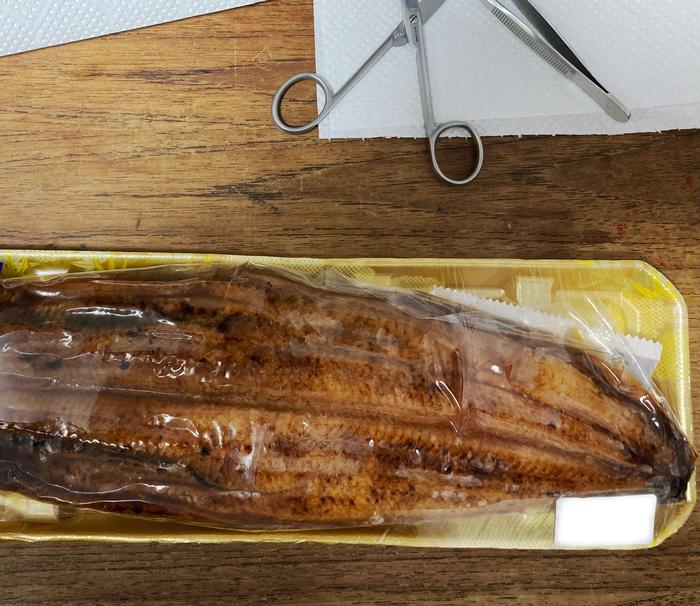A groundbreaking study led by Hiromi Shiraishi from Chuo University has unveiled new complexities within the Japanese eel market, challenging long-held assumptions about species composition in processed eel products. Traditionally dominated by the Japanese Eel (Anguilla japonica), the retail shelves across Japan have been found to contain substantial amounts of the American Eel (Anguilla rostrata), a revelation that reshapes our understanding of global eel trade and its implications for sustainable aquaculture.
Japan is renowned as the world’s largest consumer and importer of eels, and its aquaculture industry has long depended on the Japanese Eel. However, the recent investigation employed advanced genetic species identification techniques — particularly DNA barcoding targeting the cytochrome b gene — to conduct an accurate species survey on 134 grilled eel (kabayaki) samples purchased from various urban centers, including Tokyo, Osaka, Fukuoka, and more. The data conclusively showed that while the Japanese eel remains the most prevalent, accounting for nearly 62% of samples, American eel comprised an unexpectedly high 37%, with traces of European eel (Anguilla anguilla) scarcely present.
The inclusion of American eel in Japanese retail products reflects shifting global dynamics in eel aquaculture and trade. Following the 2007 listing of European eel under CITES and subsequent restrictions, as well as marked declines in Japanese eel catches due to environmental and anthropogenic pressures, the demand for alternative eel species has surged. While Southeast Asia temporarily filled the supply gap for glass eels — the juvenile form essential for aquaculture — this study highlights a recent pivot toward the American eel. This trend is not only pivotal for the Japanese market but signals wider global shifts, confirming observations from Europe, North America, and Singapore where American eel has become increasingly dominant.
Eels represent a taxonomically complex genus, Anguilla, which comprises 19 recognized species facing multifaceted risks from climate change, habitat fragmentation, pollution, disease, and especially unsustainable fishing and illicit trade. The commercial viability of eel farming is hampered by the fact that artificial breeding remains embryonic and non-commercial; thus, all farmed eels depend on wild-caught glass eels. This has fueled intense fishing pressure globally and raised concerns about the sustainability of eel populations, particularly for species already classified as endangered or critically endangered on the IUCN Red List.
Due to morphological similarities between eel species and the prevalence of processed products, traditional visual identification is woefully inadequate for tracing species origin. By utilizing genetic barcoding methods, Shiraishi’s team was able to circumvent these limitations, providing definitive species-specific insights essential for monitoring trade compliance and ecological conservation. The analysis also aligned with fisheries data, indicating that domestic eel production in Japan utilizes almost exclusively Japanese eel fry, while the imported products—entirely sourced from China—show a predominance of American eel, mirroring China’s aquaculture inputs.
One of the most striking outcomes is the minimal presence of European eels in the Japanese market. Despite historical prominence, European eel now accounts for an almost negligible fraction of retail eel products, corroborated by customs and CITES trade data showing a dramatic decline from more than 70% of total eel imports from China in 2014 to under 4% in 2022. This finding suggests effective CITES enforcement in curbing illegal European eel trade channels into Japan, though illegal transshipment and laundering of European eel glass eels into Southeast Asian aquaculture remain a concern internationally.
The study also touches on the broader issue of illegal, unreported, and unregulated (IUU) fishing. For American eel, the sharp increase in harvesting and trade has heightened worries regarding potential illicit activity. Notably, regulatory bodies in Canada have responded by suspending elver fishing licenses for the 2024 season, and international organizations including the United Nations have flagged eel trafficking as intertwined with other transnational crimes such as drug trafficking and money laundering. These developments underscore the critical necessity for rigorous monitoring, traceability, and enforcement across the entire eel supply chain.
Japan’s unique position as the world’s largest importer and consumer bestows it with significant leverage to influence sustainable practices and encourage greater transparency in anguillid eel fisheries. Regular and advanced genetic monitoring, like that employed in this study, should be integrated as part of routine inspections to prevent the infiltration of illegally sourced European eels and to understand evolving market trends comprehensively.
Despite these advances, gaps remain in our global understanding of eel consumption and trade patterns, especially in key production hubs like China and neighboring countries such as South Korea. Further interdisciplinary research combining genetic tools, trade data analytics, and ecological assessments is essential to paint a more complete picture and inform policy and conservation interventions.
This study’s revelations are not only scientifically important but have the potential to captivate consumer awareness and contribute to viral discourse on sustainable food sourcing. As the eel industry grapples with balancing economic demand and environmental stewardship, the integration of cutting-edge genetic identification techniques offers a replicable model for other wildlife commodities where species substitution and illegal trade persist.
Published in the esteemed journal Fisheries Science on June 13, 2025, this research exemplifies how molecular science can intersect with environmental policy and commerce to foster sustainable fisheries. The complexities unveiled by the team at Chuo University underscore the urgent need for continued vigilance and adaptive management to safeguard eel populations for future generations in the face of climatic, ecological, and economic challenges.
Subject of Research: Animals
Article Title: Eel consumption in Japan: insights from genetic species identification and trade data.
News Publication Date: 13-Jun-2025
Web References:
- DOI: http://dx.doi.org/10.1007/s12562-025-01894-2
- Canadian elver fishing license suspension: https://gazette.gc.ca/rp-pr/p1/2024/2024-06-29/html/reg6-eng.html
- UN Security Council briefing on Haiti eel trafficking: https://www.unodc.org/unodc/en/speeches/2025/220125-un-security-council-briefing-haiti.html
References:
The study was published in Fisheries Science, presenting peer-reviewed data on Japanese eel product species composition derived from DNA barcoding and supported by CITES and customs trade statistics.
Image Credits:
Kenzo Kaifu (Chuo University)
Keywords:
Eel consumption, Japanese eel, American eel, European eel, Anguilla, DNA barcoding, aquaculture, CITES, illegal trade, sustainability, fisheries science, genetic species identification




